Lab & Space Safety
for UCLA Samueli Engineering Student OrganizationsKEEP OUR COMMUNITY SAFE & DO NO HARM
Guiding principles for students, engineers and future leaders.
Information on this website is in no way exhaustive. Contents includes general guidelines for managing your space on campus and safety protocols for student leaders as established by the UCLA Samueli Engineering and UCLA Environment, Health and Safety. Ultimately it is the responsibility of the student organization, its faculty advisor, and sponsoring department (or the School for school-wide organizations) to safely operate their facility, keep its users safe, and reduce the impact to our community and environment.
Creating a culture of safety in all that we do.
a message from Bruce Dunn, Associate Dean of Research and Physical Resources.

Responsibility
As members of the UCLA Engineering community it is our responsibility to manage our physical space and activities to ensure the safety of our participants and reduce impact to our community and environment. As leaders, it is important to lead by example and emulate appropriate behaviors.
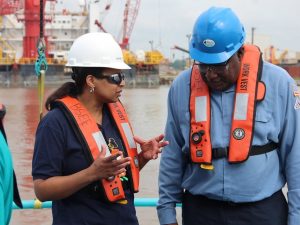
Professional Training
Safety, training, and ethical implications of your work will be a part of your life as a professional engineer. Entire courses have been created to review case studies of engineering design disasters, work-place accidents, and outcome of irresponsible disposal and dumping of harmful chemicals. The goal is to provide the education to propagate a more informed and responsible work-force of professional engineers.

Expand on Resources & Activities
An injury, death, damage to property, or a associated financial burden is an excellent way to end our activities (game-over). Our goal is to support the expansion of extra-curricular design activities, tinkering, DIY, and innovation that enrich the experience and professional training available to UCLA Samueli Engineering students. We need your help.
Work-place Accidents, Violations, and Consequences
Examples of Work-place Accidents and Violations
-
Tragedy at UCLA followed by requirements for protective gear, research into lab safety – https://dailybruin.com/2012/08/20/tragedy-at-ucla-followed-by-requirements-for-protective-gear-research-into-lab-safety/
-
Yale Student Killed as Hair Gets Caught in Lathe – https://www.nytimes.com/2011/04/14/nyregion/yale-student-dies-in-machine-shop-accident.html
-
Violations at UCLA Engineering:
-
Particles from sanding fiber-glass disbursing through the air.
-
Passerby trips and injures ankle due to bollard not being replaced.
-
Infestation of bugs & rodents due to trash pile in the SCC.
-
Fumes enter building Boelter Hall air-intake, Dean’s office evacuation ordered, sends one to the hospital- all air-filters need to be replaced in 7th floor offices.
- Dyed-fertilizer dumped into building green-space. Fees assessed to remove fertilizer.
-
Violations can result in; but, are not limited to these consequences:
- Immediate shut-down on activities, access to your lab, space, and equipment until violation is
resolved - Notification to student organization, faculty advisor, sponsoring department, and Associate Dean of
Research and Physical Resources - Notification to Dean of Students, administration, and law enforcement (where required)
- Financial reparation for any damages incurred by the violation
- Financial responsibility for retrieval or disposal of waste
- Citations/fines from UCLA Police Department or LA Fire Department
- Violation is recorded by the School
- Could lose your affiliation with the School of Engineering and school resources.
- All organizations may be impacted.
Training Topics
Required UCLA Environment, Health & Safety online training
Setting-up your campus space
- Accessibility
- Fire-safety
- Earthquake-safety
- Emergency preparedness
Managing & Maintaining your campus space
- Access
- Cleaning & trash disposal
- Dealing with maintenance issues
Reducing Hazards in the Workplace
- Equipment Safety
- Safe Work Practices
- Personal Safety
Before you Begin Check-list form
Chemical safety
- How to determine if you are using or storing a chemical
- Creating a Chemical Inventory
- Hazard communication – an obligation to inform users of risks
- Safety Data Sheets (SDS)
- General chemical safety
Job Safety Analysis (JSAs)
- When to create one
- Repository of JSAs
Safety Inspections
- Pre-EH&S Inspection walk-through with Faculty Advisor
- EH&S Safety Inspections
Policies & Resources
- Paint & SandBox Facility
- Policy on Painting & Sanding
- 2nd Floor Boelter Hall Courtyard multi-use area
- Temporary storage of large shipments
Roles & Responsibilities
- Student organization leaders
- Membership
- Faculty advisor
- Department (or School for school-wide organizations)
Next steps
- Complete & submit your Space Use Agreement form
Training & Resources
Lab & Space Safety training
Lab and Space Safety training is an annual event hosted as part of the Engineering Leadership Workshop series. Training was held on September 12, 2023 from 6 – 8 PM on Zoom.
You will find the full recording of the training to the left. For your convenience, we have provided recordings of specific sections of the training below.
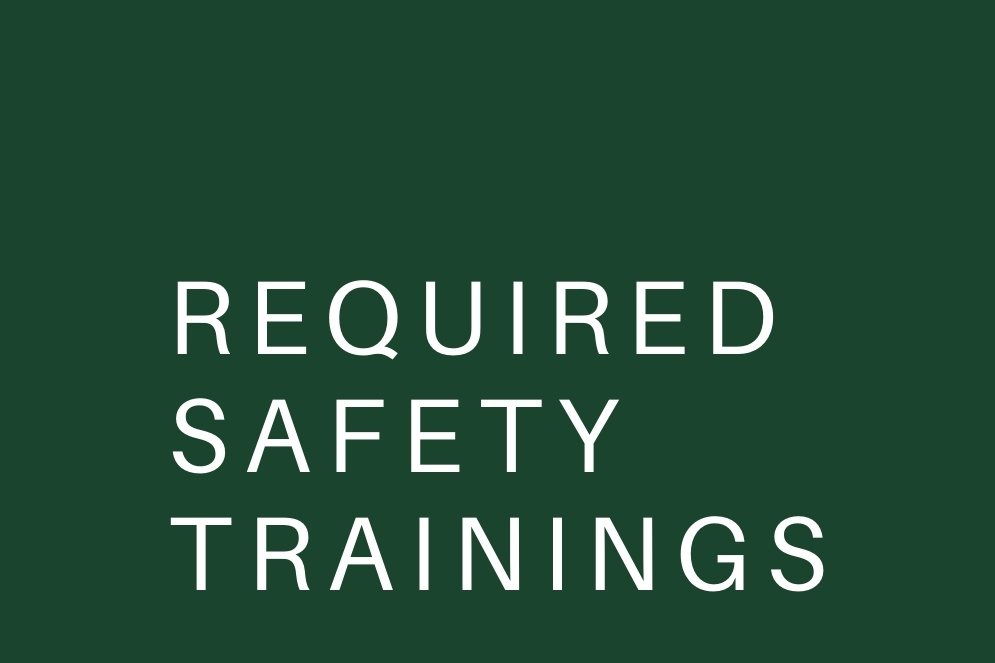
Required UCLA Environment, Health, and Safety (EHS) online training
There are 3 required UCLA EH&S Online Training for all student organization officers and members:
- Lab Safety Fundamental Concepts Training (LSFC) – this training is a campus-wide training required for all students working in labs and working on technical projects. The first portion covers chemical safety and the second half covers more general training applicable to all student organizations.
- General Chemical Safety Training (IP-GENCHEM-OL) – Common materials you may use during your work, like
paints, glues, resins, cleaning solutions, solvents, plasters and more, all qualify as “chemicals”. Improper
storage, handling or disposal of materials can result in explosions, leaks, or human injury or illness. and - Shop Safety Online Training (IP-SHOP-OL) – Introduction to the fundamentals of shop safety. Topics include: roles & responsibilities, hazards, and safe work practices.
Students can access the online training through UCLA Environment, Health & Safety’s Worksafe training website:
http://worksafe.ucla.edu.
Once your members complete their training and pass the quiz, EH&S will send them a certificate of completion or an
email verifying completion. Please have them save the file for your records. We are working with EH&S to create a mechanism for student leaders to verify completion of trainings. Stay-tuned.

Setting-up your Campus Space
This section provides information on how to set-up your campus space. Topics include: a) house-keeping, b) electrical safety, c) seismic safety, d) fire safety, e) access, and f) emergencies.
Access
-
ADA requires 3 feet access (walkways & doors).
-
Suggest 3 feet around equipment & tools.
-
Do not block doors/exits with furniture or stored items.
House-keeping
All members must maintain the condition of their assigned room and any furnishings provided to them. No permanent fixtures, drawing, painting, or markings on the facility or furnishings.
- Student organization rooms are ‘off-master’, which means there is no facilities services to clean or remove trash.
- Student organizations are responsible for maintaining a regular cleaning of their space, including sweeping and trash disposal (daily/weekly as necessary).
- Your organization will also organize a time in the year to review and purge any unneeded items being stored in your room.
- Student organizations should maintain an inventory of their furniture, equipment, supplies, as well as a sign-in/sign-out process when items are taken off campus for official club related activities.
- No food or drinks are allowed in your campus room. Any damage to the space will be the responsibility of the student organization and/or the department to repair and return to the original move-in condition.
- As delineated in the UCLA Student Code of Conduct (section 102.8), UCLA is an alcohol, drug, and tobacco free campus. There should be no alcoholic beverages or other illegal substances for the purposes of storage, consumption, or disposal in a campus room. Issues related to this should be reported immediately.
Electrical Safety
- No daisy-chaining (plugging in one to the other) extension cords or power strips.
-
Keep cords out of the walkway and doorways.
-
Do not hang electrical cords from the ceiling or sprinklers unless installed by SEAS Building management or UCLA Facilities.
-
Make sure cords are not frayed.
-
Keep electrical panels clear on all sides (3 feet).
-
Make sure all outlets are covered.
-
Never use electronics, extension cords, or power strips with broken insulation.
Earthquake Safety
-
Secure bookcases, shelving and machinery that are taller than 5 feet..
-
All tools and equipment (non-portable and without wheels) shall be secured to the floor to prevent tipping. Ensure all guards are in place for machinery.
-
Ensure all items/tools are adequately stored (securely in closed cabinets and/or not stacked so high they may fall).
- Contact Anthony Redon, aredon@seas.ucla.edu, for assistance with securing equipment & furniture. Please do this prior to your EH& S Inspection.
Fire Safety
-
Do not hang anything from sprinklers or pipes.
-
Keep fire extinguishers clear at all times (at least 3 feet).
-
Do not block access & doorways
-
Do not block fire alarm pulleys.
-
Do not block fire alarms or smoke detectors.
-
Do not prop open designated fire doors.
-
Do not stack/store items within 18 inches of the bottom of sprinkler heads. If sprinklers are not present, do not stack/store items within 24 inches from the ceiling.
-
The Fire Department MUST be contacted in the event of a fire. Regardless of how small, how little damage, etc.
Emergencies
In the event of an Emergency
• Make sure everyone is safe.
• Call 911 (if necessary) or get necessary assistance. UCLA Dispatch – 310-825-1491.
• All injuries and accidents need to be reported. Activate your emergency phone tree (see next slide).
Training & Procedures
- Emergency Procedures: https://oem.ucla.edu/emergency-procedures
- Fire extinguisher training: https://ehs.ucla.edu/fire/fire-extinguishers
Additional resources:
• UCLA Student Affairs Safety, Support & Emergency page: https://www.studentaffairs.ucla.edu/guidebook/safety-andemergency-services
• UCLA EH&S Office or Emergency Management page: https://www.oem.ucla.edu/
Emergency plan action items:
- Have your officers and project leads review the Emergency Procedure information: https://oem.ucla.edu/emergencyprocedures
- Have your officers and project leads register for BruinAlert.
- Create an emergency & evacuation plan at the start of the year and review it quarterly.
- Locate your nearest eye-wash station, fire extinguisher, fire alarm, and evacuation site.
- Obtain a first aid kit, store it in a location easily accessed by your members, and keep it stocked.
- Post your emergency & evacuation plan along with your emergency phone-tree contacts in your room.
- Create a phone-tree plan to contact necessary people. This should include:
-
- Your executive board or project lead,
- Your faculty advisor
- Wes Uehara, Student Organization Coordinator, wuehara@seas.ucla.edu, 310-206-5592
- Anthony Redon, Engineering Facilities Manager, aredon@seas.ucla.edu, 310-206-1946
- Rob Candler, Associate Dean of Research & Physical Resources, rcandler@g.ucla.edu
-

Maintaining your Campus Space
Student leaders are required to maintain and clean their campus space, manage access, and report any maintenance issues. This section provides information and resources on maintaining your campus space.
On-master vs. Off-master
- The Student Org’s areas are considered Off Master and therefore do get scheduled custodial
services. Each club is responsible to maintain their respective space clean. - Custodial services can be schedule by filling an Facilities Service Request (FSR) directly with UCLA Facility
Management for a fee. It is recommended that you obtain a quote first and determine if this is something our organization can afford.
Waste management
Trash Disposal: The primary Trash Disposal area is located in the Alley between Engineering
IV and Boelter Hall.
-
-
- Should a club need a dumpster to be brought up to the BH Patio area
please fill the UCLA Engineering Material Service Reqeust (MSR) form on the SEAS building Services webpage. (24 hours notice). - No trash should be left in the Boelter Hall patio area.
- Bulky items can also be handle by completing the MSR request.
- Should a club need a dumpster to be brought up to the BH Patio area
-
Chemical Disposal: All Chemicals set for disposal must be tag with the EH&S disposal tag
and brought to the Recovery truck parked in the Alley near the Logistics Center every
Thursday from 10am til 10:30am , or by the CNSI Dock from 10:30am to 11:00am.
Batteries and e-Waste items can be dropped off in the Logicstics Center, located in Engineering 4 room 14-108 (the entrance faces Engineering 5 and is just around the corner from the Rocket Project room). The Logistic Center is open Monday through Friday from 7:00am til 4:00pm (closed for lunch 12:00 to 1:00pm).
Maintenance Issues
Facility management Desk vs. SEAS Building Services
- For all Emergencies, please call the Facility Management Call Center at 310 825 9236
- For non Emergencies use the UCLA 311 App. One service request has been logged you
will receive an acknowledgement email, please forward the email to aredon@seas.ucla.edu
SEAS Building Services team are here to help with facility enhancement, safety concerns, Storage of bulky items, Project Management and some preventive Maintenance. Use the MSR link on the SEAS Building Services Website
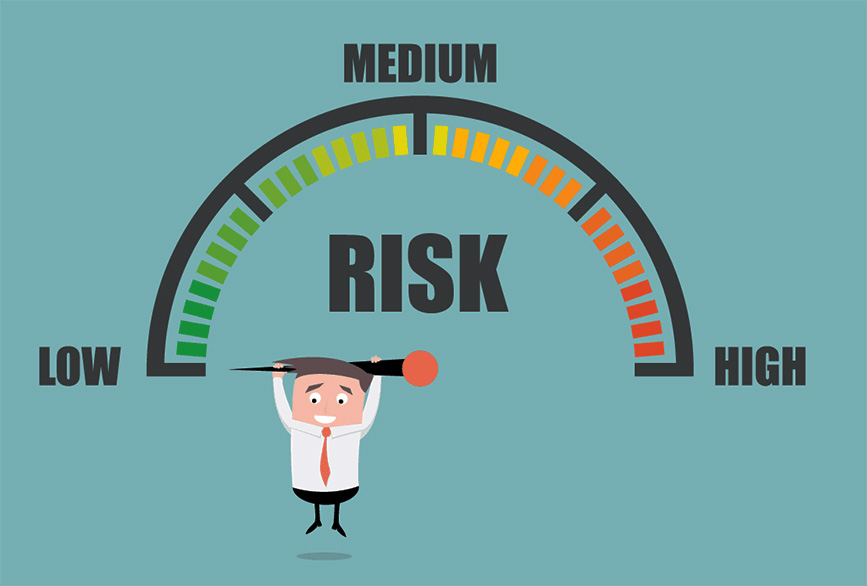
Reducing Hazards in your Work-space & Personal Protective Equipment
Student leaders have the responsibility to provide a safe work-space and to reduce hazards that could result in an accident or injury. The following provides information on how to do this in your work-space.
Equipment Safety
- If equipment is damaged, do not use it!
- Do not leave equipment unattended while its running.
- Do not operate equipment unless guards are in place.
- Guards and shields must be in place
- Do not remove guards for any reason while performing a task.
- Do not leave plugged in
- Report faulty machine and guard problems to supervisors immediately
Safe Work Practices
- Authorized users shall be familiar with the operator safety manual and/or Job Hazard Analysis (JHA) prior to the use of any piece of equipment.
- Authorized users shall not deviate from safety protocol as outlined by the manufacturer.
- Equipment shall be used only as intended and within the specifications set forth by the manufacturer.
- Work safely and methodically. Resist rushing and ask for help when you need it.
- Aisles, exits, and access to emergency equipment must always be clear.
- Immediately report any problems or concerns to the club president and/or officer.
- Damaged equipment or equipment that does not appear to be operating normally must not be used. Report the problem equipment to the club president and/or supervisor to be removed from service.
- All guards and shields must be secured and in place prior to operating equipment.
- Compressed air must not be used to clean skin or clothing. Use a vacuum to clean
work area surfaces. - Housekeeping is everyone’s duty and includes cleaning up debris from machines
and work areas frequently, maintaining proper equipment storage, and keeping
walkways and doorways clear.
Personal Safety
• Know the location of emergency equipment.
• No personal electronic devices or headphones while working at machines.
• Keep hands and body parts a safe distance from moving machinery.
• Remove loose jewelry, tie back hair and restrain beards.
• No open-toed shoes or sandals.
• Use the ‘buddy system’ (never work alone).
• Make sure you are understanding the proper operating procedures of equipment and
complete all necessary training.
Personal Protective Equipment
What is Personal Protective Equipment (PPE)
Personal Protective Equipment or PPE refers to protective clothing, glasses/goggles, headwear, footwear and other garments designed to protect the user from hazards. PPE is required for certain SCC operations, including but not limited to the use of portable/stationary power tools, compressed air, and/or chemicals.
See the EH&S Facts: Personal Protective Equipment for a brief summary of each and when they should be used.
Where do I get PPE?
It is the responsibility of your organization to secure the necessary Personal Protective Equipment necessary for your activities. Here are some vendors that supply PPE:
- McMaster Carr
- Grainger
- Office Depot
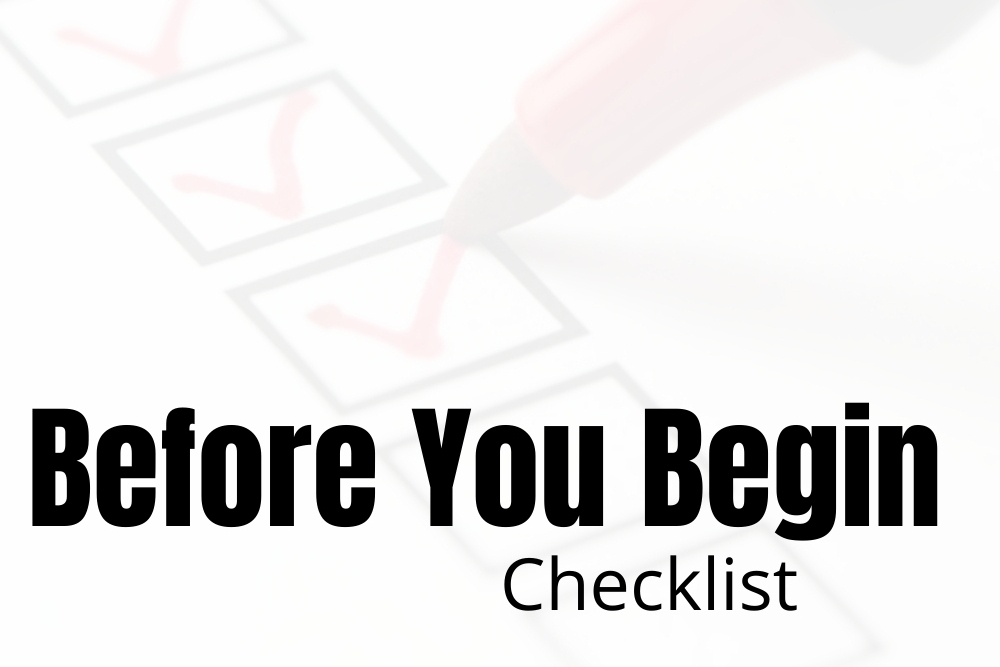
Before you Begin check-list
Use the Before you Begin checklist before you start any project. It will help you to verify that you have everything you need to carryout your activities.
Purpose & who should do this
Purpose
The Before you Begin checklist is a guide to help you plan for an activity. It will help you to reduce hazards in
your activity to reduce to potential of an accident. It will also help you to think about logistics and policies before
ordering supplies and starting your activity. The goal is to avoid any ‘show stoppers’ that will prevent you from
your activities.
Who should do this?
Any student leader that is engaging in a technical activity that requires storage and or disposal of materials, tools or processes that could cause harm if inappropriately used, or use and/or storage of chemicals.
When this should be completed?
Before you order any parts or supplies. We encourage you to complete the Before you Begin checklist before the start of each quarter and have it reviewed by your Faculty Advisor.
General Guidelines
- Any tool or equipment should have an instruction manual. Find them and have participants review them.
Please supplement the instructions as needed. - Any activity that involves a high-level of hazard, warrants a Job Hazard Analysis or Standard Operating
Procedure be adopted or created. - Any use of chemicals require a review of the chemical’s Safety Data Sheet, a review by your faculty advisor for proper use, PPE, storage and disposal, and must be included in your Chemical Inventory sheet and submitted to EH&S.
- Have your Faculty Advisor review your Before you Begin Checklist for approval.
- Provide the necessary training to your participants.
Whats on the checklist?
• Name of project or activity
• Names, title, and contact information of project lead(s)
• Summary of project or activity
• Outcomes of project or activity
• Who are the participants?
• List of tools, equipment, materials, and chemicals that will be used
• Where will these tools, equipment, materials, and chemicals be stored and will you have access?
• What are the hazards involved in your activity that could cause harm to your participants?
• Are you using tools or equipment that can cause harm if used incorrectly or an accident occurs?
• Does this involve strenuous activity or mobility?
• Are you using chemicals beyond what you would find on the shelf in a kitchen that is used to prepare a meal?
• What trainings (and/or instructions) do you have to provide to your participants?
• What do you have to teach them so they can participate?
• What do you have to teach them to reduce the potential of an accident?
• Are there any Standard Operating Procedures or Job Safety Analysis that already exists that can be adopted for your activities?
• What policies and guidelines exist that govern your activity? Paint & SandBox policy, Hazard Communication, etc.
• Do you need participants consent to participate? Publicity Release
• When and where will you work on your project or activity? Is there adequate space, lighting, ventilation, etc.?
• What is the impact of your project or activity on the community or campus-environment?
• How does this impact people walking by, in the nearby building, etc…?
• What can you do to reduce the impact of your project or activity on the community or campus-environment?
• What is the clean-up and disposal procedures for the materials?
• What is the protocol in place in case there is an emergency? What do you do? Who do you call? What if you’re off-site?
Before you Begin check-list file & other resources
- Before you Being check-list in .doc format
- Please review the Lab & Space Safety for Student Organization leaders website for additional guidance and resources for your activity.
- Check our Job Hazard Analysis (JHA) & Standard Operating Procedure repository. This link will take you to any JHAs or SOPs that were created by other engineering student organizations. Please add any that you have created to this repository for others to use. Let’s not recreate the wheel!
- Check the EH&S UCLA Box folder for JHAs that have already been created and can be adopted by your organization for your activities.
- Contact UCLA Environment, Health, & Safety for help – safetyandcompliance@ehs.ucla.edu
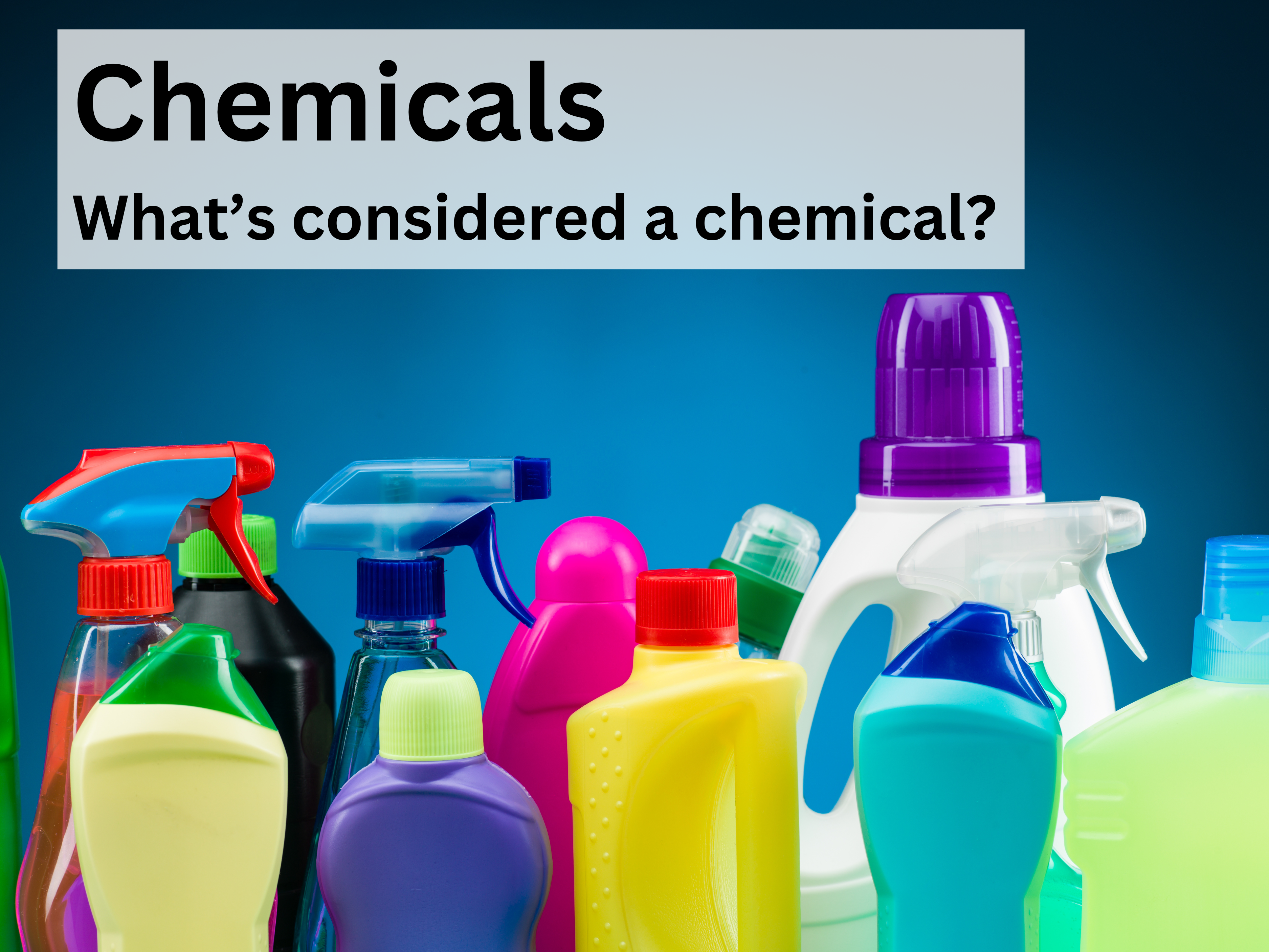
Review this if you’re using chemicals
Chemicals are everywhere
You can’t read an ingredient label on your groceries without feeling like a decent percentage of it seems like a chemical. I buy isopropyl alcohol from the grocery store. Is that not a chemical? What about lye. That’s definitely a chemical. So what is a chemical anyway? Add anything you think is a chemical to your Chemical Inventory (see below) and EH&S can advise you.
Some things to know
Chemical Label
The US Occupational Safety and Health Administration (OSHA) requires all chemicals to have a label that includes the following information:
-
- Product Identifier
- Supplier Information
- Signal Words
- Hazard Statement
- Hazard Pictograms
- Precautionary Statements
- Supplemental Information
This should be reviewed for storage, appropriate use, how to reduce hazards, PPE, and disposal. Please note that if you put the chemical in another container and intend to leave it in that container beyond your work-shift; then it must be labeled.
Please see slides for an example of an OSHA label and explanation of hazard symbols.
Safety Data Sheets
In addition to the chemical label, please review the Safety Data Sheet (SDS) of any chemical that has one. Safety Data Sheets will include 16 sections as follows:
-
- Identification
- Hazard(s) Identification
- Composition, information on ingredients
- First-aid measures
- Accidental release measures
- Handling and storage
- Exposure controls, personal protection
- Physical and chemical properties
- Stability and Reactivity
- Toxicological information
- Ecological information
- Disposal considerations
- Transport information
- Regulatory information
- Other information
Please review any Safety Data Sheets, include information on appropriate storage, training, PPE, use, and disposal on your Before you Begin checklist and review it with your Faculty Advisor. If you have any questions, please contact EH&S, safetyandcompliance@ehs.ucla.edu.
Standard Operating Procedures
EH&S has developed Standard Operating Procedures (SOPs) for a wide variety of chemical hazards. These SOPs are generally grouped by control bands, which specify a common set of precautions that apply to chemicals with a specific hazard, or combination of hazards, associated with them. Student organizations can check the repository of these SOPs for the chemicals they use.
Chemicals for which no control band is appropriate retain their own chemical-specific SOP. Please contact EH&S at laboratorysafety@ehs.ucla.edu for assistance in determining which control band applies to a particular material.
Chemical Inventory (required)
UCLA campus requires that we inventory all chemicals that are being used and/or stored in our campus space. As such, each organization is required to submit a Chemical Inventory of all chemicals used and/or stored by their organization campus room or space.
Please use the EH&S Chemical Inventory template to enter your items: https://ucla.app.box.com/s/tv3ndyqgmw2x9sbyb6g2yxvvn25ekddl. The tables are formatted to collect information that allows campus to quickly organize data. Please do not change the format embedded in each cell of the table.
If you have questions, please email EH&S at safetyandcompliance@ehs.ucla.edu.
Disposal of Chemicals
- Dispose of all hazardous and chemical waste via UCLA EH&S Hazardous Waste Department
- DO NOT dispose of chemical waste in trash cans, down drains, in storm drains, outside, by evaporation, etc
- Your regular waste pickup: Engineering IV Loading Dock, mornings Tues & Thurs
- Waste must be tagged- Consult your Faculty Advisor for more information.
Action items & additional guidance
Hazard Communication & Chemical Safety
Step 1: Student organizations must keep a Chemical Inventory List of all chemicals used in the work area and used in activities. Your organization, along with your Faculty Advisor, should do a walk-through of your campus space and review your activities to identify all chemicals that your organization uses or stores. These should be added to your Chemical Inventory.
Step 2: Organizations and your Faculty Advisor should review the Chemical Label, Safety Data Sheet and Standard Operating Procedure (if applicable) for each chemical being used or stored to determine the hazards associated to the use, storage, disposal of that chemical, and how you will design your activity to reduce the hazards associated.
Step 3: Create a training for your membership that will engage in the activity. It should include:
- Chemical information, which requires the chemical to have a legible, intact label.
- Hard copies of the Safety Data Sheets (SDSs) must be available at the location where chemicals are being stored and used.
- Information on the hazards of the chemicals with which they are working.
- Instructions on how to access, handle, store, and dispose the chemical.
- Required PPE and supervision.
- Storage and access to the chemical,
- What to do in case of an emergency.
Step 4: Maintain a log on who is authorized to use the chemical or engage in the activity.
Refer to the EH&S Facts Sheets for details: Hazard Communication and Chemical Safety. If you have questions, please email EH&S at safetyandcompliance@ehs.ucla.edu.
Additional Guidance
- Most student organization rooms are not safe to store or use chemicals. You MUST consult with your faculty advisor regarding chemicals in your space.
- Chemicals shall be stored in closed containers when not in use.
- Store chemicals in designated flammable storage cabinets as applicable.
- Ensure incompatible chemicals are stored separately.
- Ensure secondary containment is utilized to catch leaks from chemical containers.
- Do not order bulk/excess chemicals that may not be used by the end of the project/academic year.
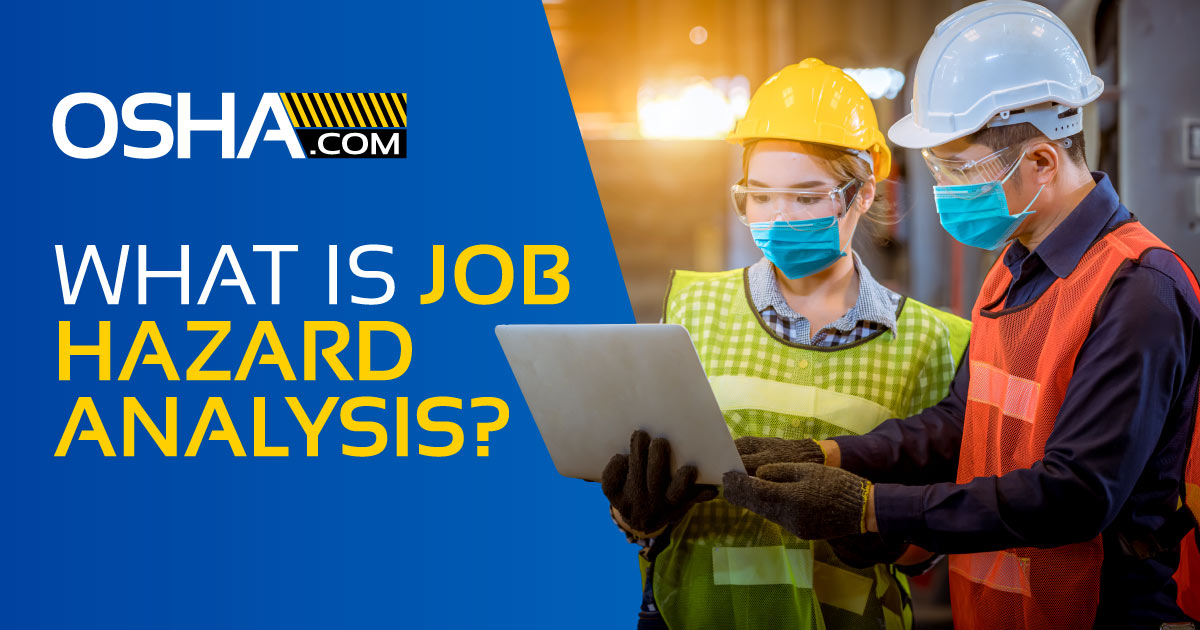
Job Hazard Analysis and Standard Operating Procedures
Job Hazard Analysis (JHA), formerly known and Job Safety Analysis and Standard Operation Procedures (SOP) for chemicals help student leaders to review activities and provide instructions to users on an activity in a way to reduce the potential for any accidents to happen. All organizations engaged in technical activities, use tools, and/or chemicals should consider creating or adopting a JHA to reduce the potential of accidents or injury.
See below for more information
What is a Job Hazard Analysis (JHA)?
A Job Hazard Analysis (JHA) is a systematic process used to identify potential hazards and risks associated with specific job tasks or activities. It is a proactive approach to workplace safety that helps organizations prevent accidents and injuries by assessing and mitigating potential risks before they occur.
Creating a JHA
Job Hazard Analysis (JHAs) are typically equipment specific. These documents should provide safety, health, and environmental information to work safely. Supervisors and student organization members who use a common piece of equipment should collaborate to develop JHAs. Training on JHAs should be updated and documented annually and as new equipment or procedures are introduced.
Environment, Health & Safety (EH&S) provides a JHA form template that you can use to create a JHA and access to a JHA repository that includes JHAs that have already been created that you can adopt or use to assist you in developing a JHA specific to the activity (job/task) you are planning. EH&S also provides Chemical Banded SOPs to use chemicals. Please check these resources before creating your own. There might be one available that you can adopt for your tool or activity.
Step 1: Identify any tool or equipment that has the potential of causing injury if not used appropriately on in an accident.
Step 2: Review this EH&S site, https://ehs.ucla.edu/documents/general-occupational, to see if a JHA (formerly known as JSA) was already created for your tool or activity. Student organizations can also check our Job Hazard Analysis (JHA) & Standard Operating Procedure repository. This link will take you to any JHAs or SOPs that were created by other engineering student organizations. Please add any that you have created to this repository for others to use. Let’s not recreate the wheel!
Step 3: If a JHA does not exist, then work on create a JHA tailored to your activity. If a JHA already exists, make sure to tailor it to your specific operations.
Step 4: Have this reviewed and approved by your Faculty Advisor.
Step 5: Create and deliver a training for your membership.
Step 6: Keep a log of membership that has completed that training and can have access to that piece of equipment.
Step 7: Pass this information on to next year’s officers.

Resources for Student Organizations & Policies
You will find information on additional resources available to student organizations in this section. Resources include the UCLA Engineering MakerSpace, Machine Shop, Paint & Sand Box facility, and the Logistics Center.
See more information below
UCLA Engineering Innovation Lab MakerSpace
The UCLA Engineering Innovation Lab MakerSpace is located at 1805 and 2808 Boelter Hall. Please visit the MakerSpace website to learn more about the MakerSpace, tools and equipment available, access and necessary training.
Student organizations are able to utilize the equipment in the MakerSpace for their projects and can discuss use of the space for activities with the Director of the MakerSpace Professor Jacob Schmidt. Currently the MakerSpace is NOT available for meetings. You can contact him with questions at schmidt@seas.ucla.edu.
Professor Schmidt is also the Director of the Engineering 96 courses that are taught by UCLA Engineering undergraduates. To learn more about E 96 or applying to be an instructor, please review the slides and contact Professor Schmidt.
UCLA Engineering Machine Shop
Information updates as of September 2023.
Hours of operation:
Monday – Friday
7 AM – 12 PM and 1PM – 5PM
Saturday hours TBD
Required orientation:
Please visit the UCLA Engineering Machine Shop website for more information on the following:
- Safety Guidelines
- Banned Material
- Reservations and the reservation policy
- Equipment
- Training
For additional questions, email Anthony Redon, Engineering Facilities Manager, at aredon@seas.ucla.edu.
Paint & Sand Policy and Facility
Painting & Sanding Policy and PaintBox Facility
All Painting and Sanding should be done in the Paint & SandBox facility located on the southwest corner of Boelter Hall on the ground level.
Sanding generates dust particles that can easily be lifted into the air. In certain instances, these substances can be harmful if inhaled or ingested. Proper precautions should be taken to ensure those who are sanding as well as those in the surrounding community are kept safe. Painting is NOT allowed around the Student Creativity Center. Boelter Hall air-intake is located all around the Student Creativity Center on the 2nd floor. Any fumes will be immediately taken in by the air-intake and distributed throughout the building.
UCLA Samueli Engineering, in guidance by the UCLA Environment, Health & Safety Shop Safety Team, Industrial Hygiene Team, and the Fire Marshals, have identified a location (SCC Paint & Sanding box) and process for student organizations’ sanding activities.
Information & Policy
Location: The Paint & Sand Box facility is located on the southwest corner of Boelter Hall on the ground-floor. It is a fenced-in area just outside the southwest entrance to Boelter Hall. The dimensions of the work area is 20.5′ x 17.5′.
Guiding principle: Use your best judgement to ensure that:
-
we are using the facility for its intended purpose,
-
we safely paint or sand without harming ourselves or others,
-
we do not damage our facilities and/or equipment, and
-
University business can continue without being disturbed.
Reservations:
-
Email requests to Anthony Redon, aredon@seas.ucla.edu, Engineering Facilities Manager at least 36 hours in advance. Requests must include:
-
Student organization or team name,
-
Name, email, and cell phone of officer responsible for activity (must be present during work),
-
Summary of activity, and
-
date, time (including duration) of activity.
-
-
Officer will be provided instruction & combination to unlock the Paint & SandBox facility.
Paint & Sand Box policies:
-
The Paint & Sand Box facility is for painting and sanding only. No other activities should be held in this location.
-
Do not store any materials in the Paint & Sand Box facility.
-
Do not block Boelter Hall exterior doors at any time.
-
Not following Paint & Sand Box policies and procedures as delineated in this website will result in your student organization losing Paint & Sand Box access and privileges.
-
Your student organization and their Department will be held responsible for any damage or injury in the Paint & Sand Box facility.
-
UCLA Engineering administrative staff reserves all rights to determine access to the Paint & Sand Box facility.
-
Do not graffiti the facility!
Prep for Sanding:
-
Round up your volunteers
-
Complete recommended trainings:
-
EH&S N95 Respirator Training and Fit-testing – http://worksafe.ucla.edu.
-
Wet sand training (wet sand when possible) – is being developed.
-
-
Determine whether you are dry or wet sanding (contact your faculty advisor if you are unsure):
-
Dry sanding – wood or foam
-
Wet sanding – concrete, anything ‘rock-based’
-
No sanding – glass, fiberglass, asbestos
-
-
Prepare your equipment
-
-
PPE
-
N95 respirator
-
Googles or safety glasses
-
-
Sanders & necessary sanding supplies
-
Use sanders that are connected to a vacuum when possible.
-
-
Vacuum
-
You must use 1 vacuum per electric sander or person sanding.
-
-
-
Portable garden sprayers (or equivalent) if you are wet sanding.
-
Clean-up and disposal tools
-
Mop, trash bags, wet/dry vacuum, rags, etc.
-
-
-
On Sanding Day:
-
Wind – windy days are not good for sanding as it will be difficult to control your dust. Please consider rescheduling your sanding for non-windy days.
-
Boelter Hall exterior doors on the southwest side (nearest to the Paint & Sand Box facility) on floor 1 and 2 MUST be closed while sanding.
-
Prepare your prototype and PPE.
-
Test sand – have someone check to see if debris is escaping the area. If there are dust particles in the air, then you need to reevaluate the number of vacuums per sander that is being used.
-
If wet sanding is done, the material should be sprayed periodically.
-
Clean-up & disposal:
-
Dry sanding – Use a HEPA vacuum to pick up all debris.
-
Wipe or mop up after vacuuming. Sweeping should be avoided to reduce the amount of particles in the air.
-
Wet-sanding – water should be swept into a central location and vacuumed up using a wet/dry vac. Some absorbent material may be needed to create a border around the space to prevent water from escaping into pedestrian areas.
-
Please dispose of materials and dust inside vacuums (if applicable).
-
Clean out the Paint & Sand Box facility.
-
Close and lock the facility.
-
Email Anthony Redon, aredon@seas.ucla.edu, once you are done.
-
Prep for Painting:
-
Round up your volunteers
-
Get your paint – only paint brushing and spray painting with cans is allowable (no compressed air-powered spray guns).
-
Drop cloths – You must provide your own drop cloths to cover the area (and overspray) of the item you are painting.
-
Measure your prototype (or object you are painting). Painting MUST be done in the confines of the Paint Box area.
-
Round up your volunteers.
-
Prepare your PPE.
On Painting Day:
-
Wind – windy days are not good for painting as it will be difficult to control your painting and the overspray. Please consider rescheduling your painting for non-windy days.
-
Boelter Hall exterior doors on the southwest side (nearest to the Paint Box facility) on floor 1 and 2 MUST be closed while painting.
-
Place your drop cloths – to avoid staining walls or ground.
-
Place your prototype on the drop cloths. Remember that painting MUST be done in the confines of the facility area.
-
Use PPE if necessary or preferred– gloves, apron and/or N95 respirator may be used at the painter’s discretion.
-
Test paint – to ensure no overspray that will stain the facility, nearby buildings, or equipment.
-
DO NOT Graffiti the Paint Box!
-
Clean-up & disposal:
-
Drying – you may leave your prototype in the SCC Paint & Sand Box facility area (at your own risk) to accommodate drying time.
-
Remove all items from the facility area.
-
Dispose of your drop cloths and any other materials that need disposal. EH&S guidelines for proper disposal: https://ehs.ucla.edu/waste.Check the facility for accidental overspray (please remove all stains).
-
Close and lock the facility
-
Email Anthony Redon, aredon@seas.ucla.edu, once you are done
-
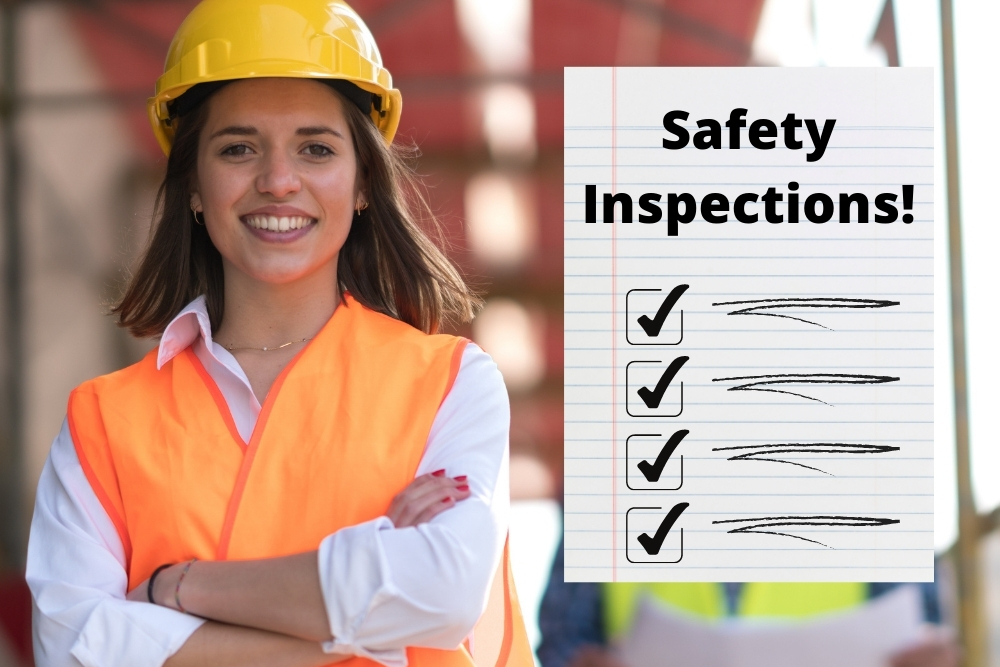
Faculty Advisor walk-through & EH&S Safety Inspections
All student organizations that occupy space in the School are required to do a faculty- advisor walk-through of your space. This should be completed at the start of the academic year and before your EH&S Safety Inspection if you are required to do one.
UCLA’s office of Environment, Health and Safety (EH&S) performs annual safety inspections of all student organization space where design work involving tools, equipment that pose potential hazards, and chemicals occurs.Engineering student organizations that occupy space in the school are required an EH&S Safety Inspection if one of the following applies:
- If your organization uses space in the Student Creativity Center regardless of how you use your space,
- If your organization works with tools, equipment, or chemicals that can cause harm.
UCLA Environment, Health, & Safety Inspections will be available October 2 – 9, 2023. These inspections must be completed by October 9, 2023. Each inspection takes approximately one hour, and any assigned action items should be completed within 30 days. These inspections focus on:
- Required safety documentation and access controls
- Policies
- Facility safety
- Electrical safety
- Fire/emergency safety and preparedness
- Chemical hygiene
- Machinery and equipment safety and controls
- Applicable high risk operations
- Member training
Action Items
- Prior to October 2, 2023 – Walk-through of space with your Faculty Advisor (all organizations that occupy space in the School)
-
- Discuss room set-up & safety
- Discuss your quarterly activities and ask for guidance on reducing hazards in your activity
- Here is a checklist for a faculty to use when they are conducting their walk-through.
-
- Schedule your EH&S Safety Inspection – an email was sent on Friday, September 29, 2023
- October 2 – 9, 2023 – UCLA Environment, Health, & Safety Inspections – October 2 – 9, 2023
- Friday, October 13, 2023 – UCLA EH&S Inspection Report file must be emailed to Wes Uehara, Engineering Student Organization Coordinator, wuehara@seas.ucla.edu
- Friday, November 10, 2023 – All assigned action items identified during your inspection must be completed & resolved.
- Friday, November 17, 2023 – email your EH&S Inspection Report file that indicates that all action items (if any) have been resolved to Wes Uehara, Engineering Student Organization Coordinator, wuehara@seas.ucla.edu
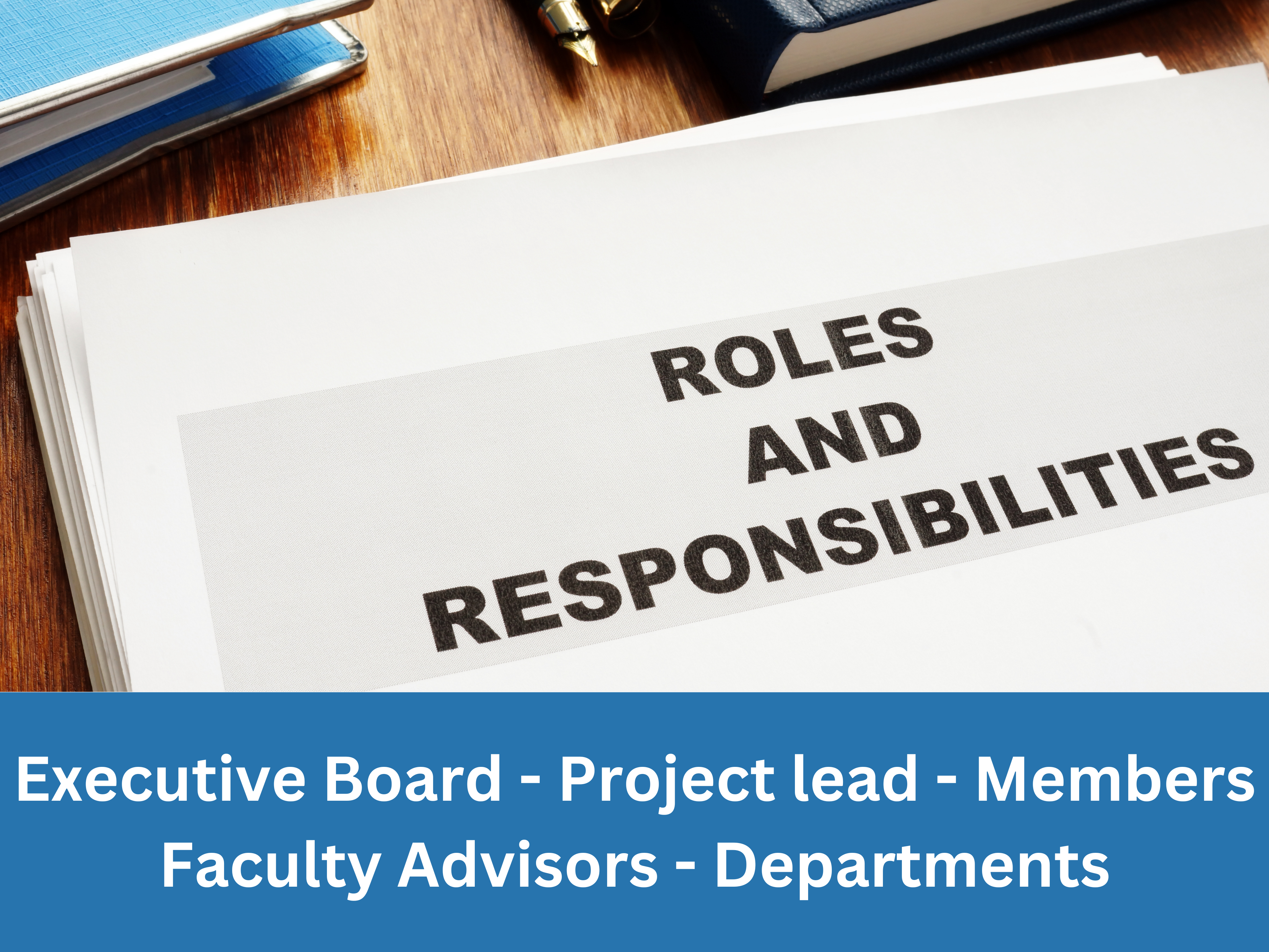
Roles & Responsibilities – let’s work together!
We all need to work together to ensure we reduce hazards that could cause an accident or injury in our activities as well as our impact on our campus community and physical environment. The following provides guidance on the roles and responsibilities of your officers, members, project leads or lab managers, your faculty advisor, and sponsoring department.
See below for more information.
Executive Board & Officers
- Implement the policies and protocols found on the Lab & Space Safety for Student Leaders website.
- Assign to an officer or elect an officer to oversee operations and safety in your space.
- Share and review the Lab & Space Safety website with your membership.
- Review, implement, and disseminate policies and information related to space and safety from
Campus and the School of Engineering to your membership throughout the year. - Schedule a ‘walk-through’ of your campus space with your Faculty Advisor.
- Complete an EH&S Inspection if you are an organization that resides in the SCC or works with tools,
equipment, and materials that could cause harm. - Report any inappropriate activity, theft, accidents, damage to the School and your faculty advisor.
Project Leads & Lab Managers
- Assist Executive Board with carrying out responsibilities.
- Complete the ‘Before you Begin checklist’ prior to starting a new activity. Review activities with your
Faculty Advisor before implementing. - Identify, create, or update Job Hazard Analysis, review of chemical labels, Safety Data Sheets, and Standard Operating Procedures for any chemicals you are using.
- Designate a location in your work area where all equipment manuals are easily accessible to those who are using the equipment.
- Provide training to membership before starting activities.
- Create an ‘Authorized-use log’ or record of who has completed the necessary trainings and can have
access to participate in an activity, use a tool, or handle supplies. - Create a repository where training tools, curriculum, and authorized-use logs are kept to pass to next
year’s officers.
Members
All members of student organizations have the responsibility to:
- Review the Lab & Space Safety for student organizations website for policy, procedures and resources before starting any activity,
- Complete the required EH&S online trainings each year and provide the proof of completion to your organization:
- Lab Safety Fundamental Concepts
- Shops Training
- General Chemical Safety Training
- Complete any specific training on using tools, equipment or handling chemicals offered by your organization before starting an activity.
- Report back any inappropriate activity, missing equipment, or accidents to your officers and project leads.
Faculty Advisor
- Faculty Advisors assume ultimate responsibility for the safety of the members of the student
organization and the impact on our community of any activity that the organization takes on. - Faculty Advisors will ensure student organizations are in compliance with Space & Safety Protocols
on this website and any UCLA Environment, Health and Safety policies. Advisors will help the
organization to determine a solution to any activity or situation that is not in compliance. - Assist student organization to review activity, and identify tools, equipment, chemicals or substances
that they use that requires the creation or adoption of a Job Hazard Analysis, review of chemical labels, Safety Data Sheets, Standard Operating Procedure and implementation of activities. - Quarterly Room Inspection of the student organization’s physical space to provide guidance on EH& S
space and safety compliance and review activities. - Advocate with Department or School on behalf of the student organization for resources needed to
reduce the hazards and impact on the community associated with their activities.
Sponsoring Department or School of Engineering
- Address any violations regarding space & safety incurred by the student organization and ensure
compliance with Space & Safety Protocols created by UCLA Samueli and EH&S policies on safety
and managing space. - Assist in identify summer storage should the room assigned to the student organization be needed
over the summer for School outreach programs. - Assign a faculty to review Space Use applications from student organizations (every other year).
Your sponsoring department is your faculty advisor’s department. The School of Engineering is the sponsor of school-wide organizations such as ESUC, MentorSEAS, and Ambassadors.

Space Utilization Agreement form
All student organizations that occupy space in the School of Engineering are required to adhere to the Space Utilization Agreement form. A submission of this form is required each academic year.
- Download a copy of the Space Utilization Agreement form here.
- Once you complete the form and obtain all necessary signatures, please save your file as .pdf with the following file name: Organization or project team name_SpaceUse_2023. For example – BruinRacing_SpaceUse_2023.pdf.
- You can then submit your form here. Please do not email your form to us.

We are here to help!
Let us know if you have any questions:
- UCLA Environment, Health, and Safety (EH&S): safetyandcompliance@ehs.ucla.edu
- Anthony Redon, Engineering Facilities Manager, aredon@seas.ucla.edu
- Wes Uehara, student org helper-guy, wuehara@seas.ucla.edu
- Rob Candler, Associate Dean of Research & Physical Resources, rcandler@g.ucla.edu
- Richard Wesel, Associate Dean of Academic and Student Affairs, wesel@ucla.edu
